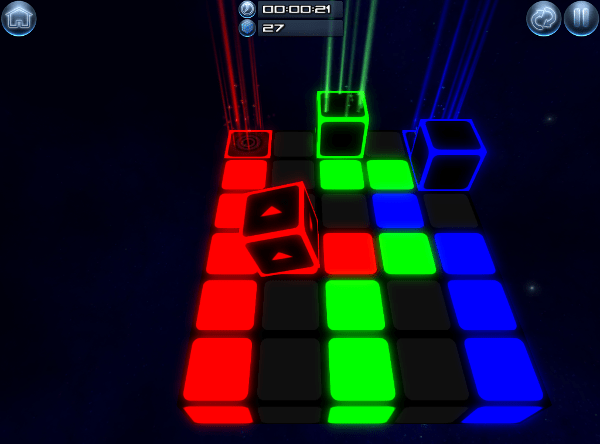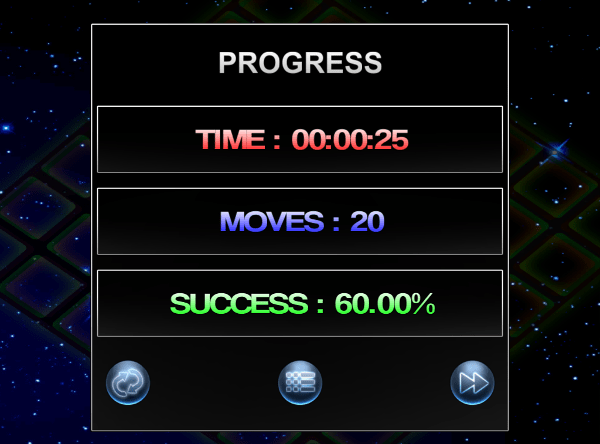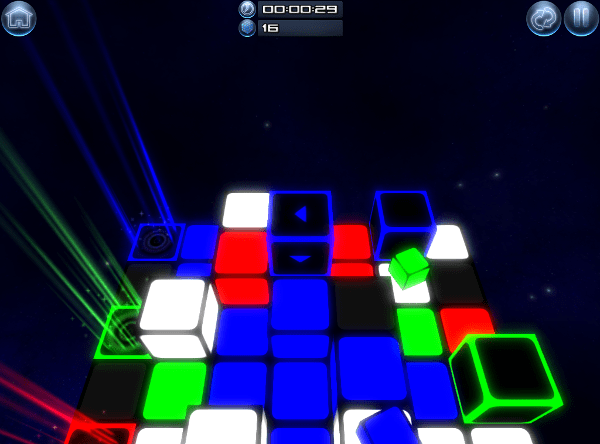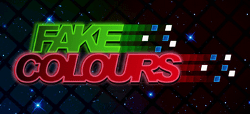Fake Colours – What We Think:
The sense of victory after completing a puzzle is one of the best aspects of a puzzle game. The trial and error that goes into each puzzle or the amount of time spent finding the solution makes that end goal so rewarding. It’s something that a lot of puzzle games fail to accomplish either because they are too easy or focus on other meta-game aspects. Fake Colours by Forthright Entertainment is a game that successfully nails the crucial “Eureka!” moment.

In Fake Colours, you have to move three colored blocks into their glowing colored space. Once you accomplish this, the stage ends and you are then graded on how quickly and how efficiently you completed it. Mechanically, it sounds easy but the game requires that colors can only move on spaces of the same color. Its simplistic, core idea is easy to grasp and the challenge comes from the level layouts themselves.
Hue Up For a Challenge?
There are 30 levels in the game that get progressively more difficult. Aesthetically, levels look the same but are varied enough to the point that they don’t feel the same to play. Early levels get you well situated with the game but by level 14 the game starts to get tougher. Overall, it’s definitely not an easy puzzle game.
You’ll do a lot of using certain blocks as bridges, which means that you can climb onto different colored blocks to help you get over spaces that are spaces a certain colored block can’t touch. The game can get real tricky when it adds spaces that change a block’s color or blocks that are stacked onto each other which can add more complexity. There is only one right way to complete a puzzle, which is limiting and makes the game a lot more about trial and error instead of a earning a serendipitous feeling of accomplishment.

Tinted Love
The problem with Fake Colours lies both in its camera and controls; I felt like I could never get a good view of levels or a great handle on controlling the blocks. You have to press E to move the camera left and R to move it right, and it doesn’t move smoothly, but rather in 90 degree turns. When the camera controls are mapped to those two buttons and you are moving the blocks with WASD, it’s really awkward. The game also requires that in order to switch to a different colored block you have to click on it first, so sometimes blocks are out of view and you have to move the camera until they are in view in order to click on it; or simply click on the out of the way N key.
There is also no way move the view of the playfield up or down. When the game introduces stacked blocks, it makes things a lot more difficult to see. In my opinion, the game would have benefited from a smooth rotating, mouse controlled camera.
Visually the game is very bland. Levels have the same look to them so the game ends up feeling unexciting as a result. The game’s music is very relaxing (if a little bland), which in a way makes the game feel a bit more subdued.

It’s Palette-able
Though the control issues and fixed viewpoints detract from the overall experience, the puzzle solving portion is still solid and challenging. If you’re interested in a puzzle solving game without a lot of gloss, I’d recommend Fake Colours.





